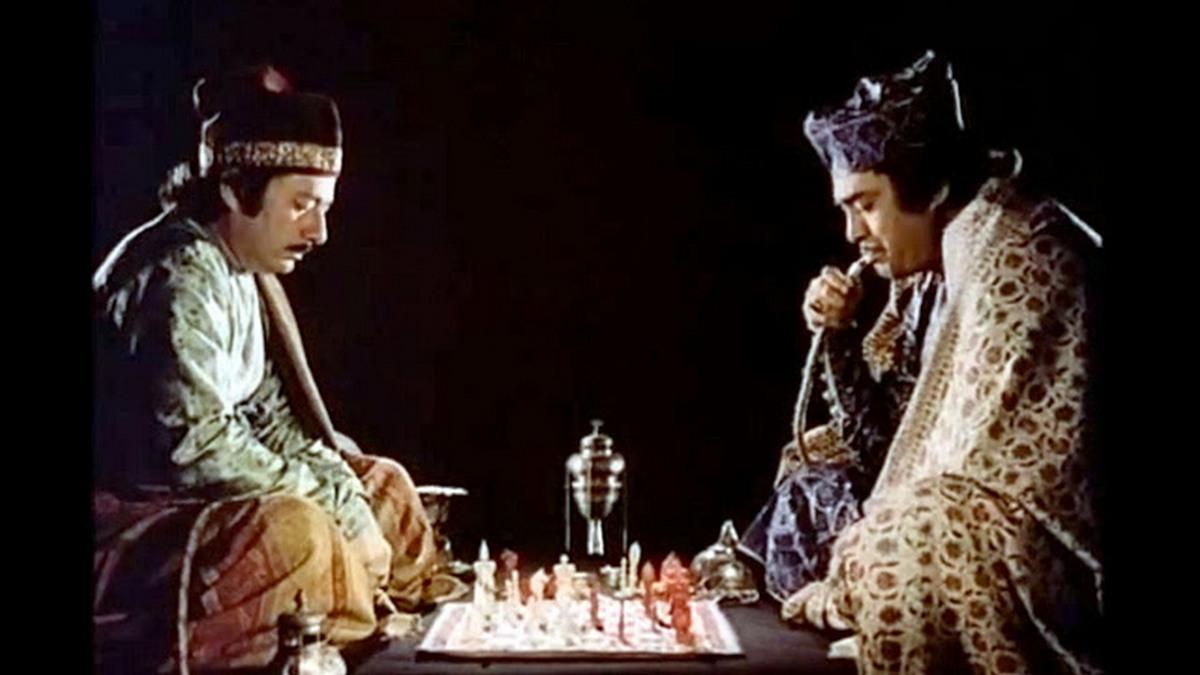
Shatranj in the games of Williams, Horwitz and Nimzowitsch
"Nature abhors a vacuum"
Sometimes we crave what we lacked before. Jackie Gleason, the famous comedian/actor, was so poor as a child, sometimes he did not have any food to eat! When he became famous and affluent, he ate as much as he could!
In my six years active in chess (1972-1978), I did the most with what I had: a few chess books, no coaching, and lots of OTB tournaments and thousands of blitz games. What I lacked in chess culture and knowledge, I had in enthusiasm, genuine enthusiasm, for the game!
But because my chess lacked the depth of a proper chess culture, as would have been provided by good coaches or teachers, I find myself enjoying now the exploration of chess ideas throughout the ages. One common thread in my blog posts is the repetition of an idea or pattern, sometimes more than a hundred years apart!
With this chess culture comes, I hope, a deeper understanding of the game itself; of the positional formations and their characteristics. With the exploration of tactical themes comes an increased awareness of the geometrical and vectorial relationships between pieces and squares, of forces converging, concentrating and dissolving, and of the mathematical resolution into one type of advantage or another.
When you look at the games of Tal, for example, you will find games in which he engages in a wild combination that yields him a one-pawn advantage in the endgame, or just a superior minor piece in an endgame. The following two examples are from two Tal-Smyslov games:
In the first example, Tal starts with what appears to be a d3-system against the Caro-Kann, only to play d4 a few moves later! He opens the position with the ease of someone opening a can of soup, produces wild complications, and ends up having a winning endgame (up an exchange and a pawn), bringing Smyslov's resignation a few moves later! Take a look!:
In the next game, Tal sacrifices his Queen in the opening to achieve...a slightly better endgame with equal material! Smyslov, one of the greatest endgame players of all time, could not overcome his positional disadvantages.....
Once thing that many people do not know is that Tal was an extremely good endgame player, even in his early years!
The reason I pointed out these two examples is to highlight the fact that tactics, by themselves, are NOT the solution. They are part of the equation, no doubt, but a deep understanding of the game is essential if tactics are going to serve their deepest purpose.
If you do not know where you are going, if you cannot properly evaluate an endgame, then how are you going to make the crucial decisions? (which pieces to exchange, which to keep and why).
For a deeper understanding of chess, a thorough study of the games of the great Masters of the past is crucial. It enables us to see the practical evolution of an opening, as exemplified in the organic development of it in the course of the games themselves.
It is in this context, in this spirit, that I present this blog post and the games contained in it.
-------------------------------------------------------------------------------------
Some chess players are great Masters at the game, and yet others are also great Teachers!
Among them Nimzowitsch stands out as one of the great Teachers. As a player, also he was top-3 in the world at the end of the 1920's, being considered, along with Tartakower, as a possible challenger to Alekhine.
When I was younger, my rating went from 1800 to 2000 after I read "My System", by Nimzowitsch:

It increased the wealth of concepts in my game; my understanding of the chess pieces and their strengths and weaknesses.
I did not know that he had written also another book called "The Praxis", which is full of practical examples of his concepts. It is really a masterpiece of chess coaching through a book! If you want to get stronger, I highly recommend it!

Luckily, now a book has been published which includes both books in one volume!

 Alekhine-Vidmar
Alekhine-Vidmar
One of the games in this book is Vidmar-Nimzowitsch, New York 1927:
Somehow, this game triggered something in my mind; the following formation:
When I mentioned this pattern to my dear friend,
and he had the tabiya (except for the move ...b6).
